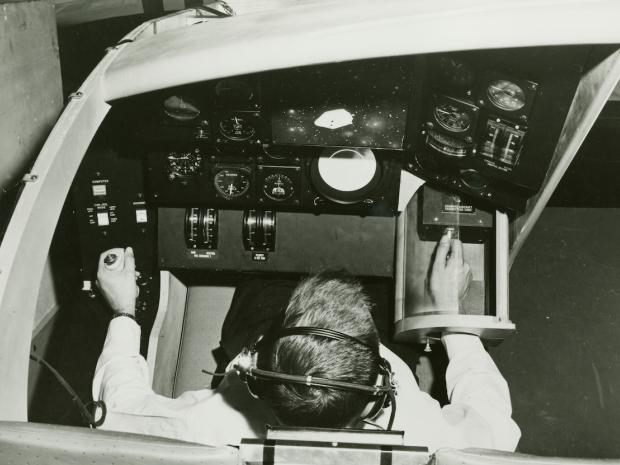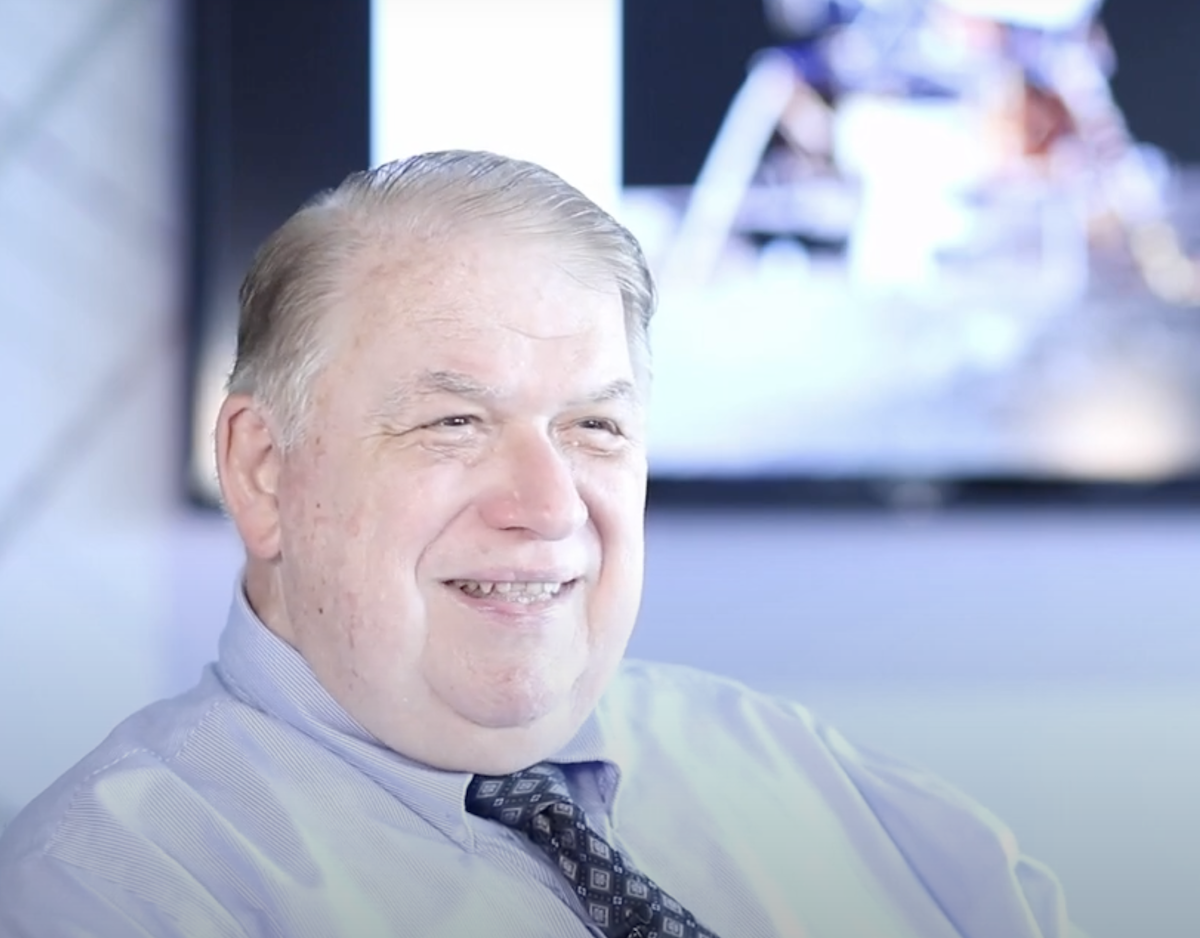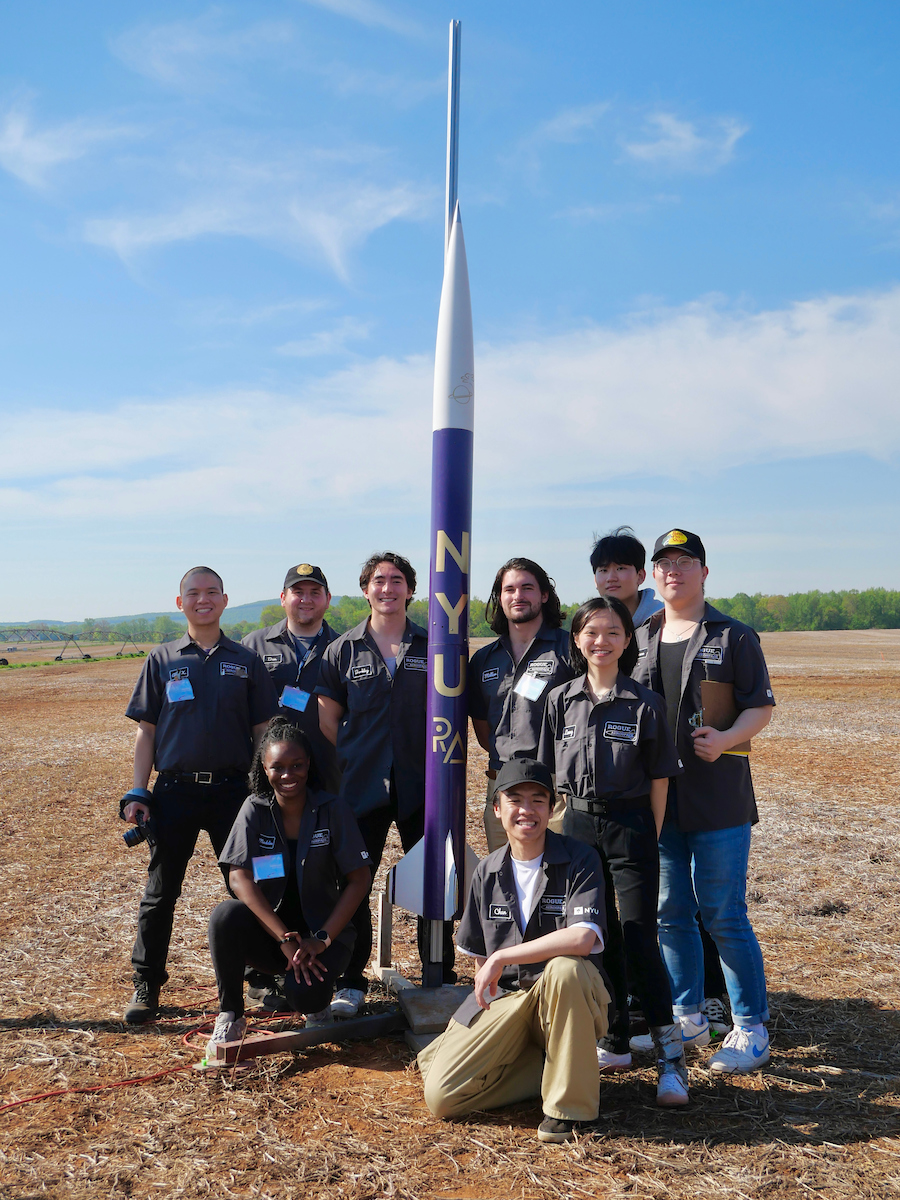NYU Tandon goes to space

The human drive to explore extended itself to the stars in the 20th century. The monumental, species-defining achievement of reaching space rested on the shoulders of the engineers and scientists who made that impossible dream a reality. NYU Tandon engineers were among that prestigious group, and we haven't stopped looking up since.
A first of many firsts on the way to the stars
The aeronautics program at NYU was one of the first ever offered at an American university.
The first lectures in aeronautics were given at NYU in February of 1922 by Alexander Klemin, who taught the topic at MIT and was also in charge of experimental work at McCook Field during the First World War. By September 1923, the University had appointed him as Associate Professor of Aeronautical Engineering.
In 1925, with an endowment from Daniel Guggenheim, the Guggenheim School of Aeronautics was founded, and the University Heights campus later also boasted a 1,500-square-foot aerospace laboratory, thanks to a grant from the National Aeronautics and Space Administration (NASA).
The 1940s and ‘50s were a time of expansion within the field of aviation in general — as well as at NYU and the school known before its merger with the University as the Polytechnic Institute of Brooklyn. In 1942, the first Master of Science degrees in Aeronautical Engineering were awarded at Poly, and the school’s AE Department boasted world-renowned faculty who regularly conducted research in collaboration with the National Advisory Committee for Aeronautics (NACA), the precursor to NASA.
Tandon breaks through the atmosphere
As an engineer at Grumman Aircraft, faculty member Thomas Joseph Kelly led the team that designed and tested NASA’s first lunar module — an assignment he once described as “an aerospace engineer’s dream job of the century.” His two-stage landing vehicle, which earned him the distinction of being called “the father of the lunar module,” was successful in descending to the Moon’s surface and then returning Neil Armstrong and Buzz Aldrin to the Apollo Command Module for the flight back to Earth. In 1972 NASA awarded him its Distinguished Public Service Medal, and two decades later he was elected to the National Academy of Engineering.
Kelly is one member of a broader community leading the way to space at NYU Tandon. Tandon has a long history of exploration, research, and groundbreaking advancement in aeronautics, aerodynamics, and astronautics, and some of our alumni and faculty members had a direct hand in the Apollo 11 Moon Landing on July 20, 1969.
One example is Jay Greene (’64), whose tenure at NASA coincided with a golden age of space exploration. He was at Mission Control when Apollo 8 became the first manned spacecraft to leave Earth’s orbit, circle the moon, and return safely to Earth, and he oversaw the flight dynamics console during the descent of the lunar module in 1969, after Apollo 11 had carried Neil Armstrong and Buzz Aldrin to the Moon. He was serving as flight director when the space shuttle Challenger broke apart on January 28, 1986, just 73 seconds into its flight, marking the first time NASA had lost a crew in flight, and he subsequently accepted a post as head of NASA's newly created safety division.

As a young engineer, the late Industry Professor Gunter Georgi helped to build NASA’s first lunar module, conducting thermal analyses of the craft, which could reach temperatures of up to 360 degrees and down to -460 without proper thermal control. (It wouldn’t do, he would often tell students, to either freeze or boil an astronaut.)
Former Professor of Mechanical and Aerospace Engineering and Vice President Emeritus Richard Thorsen, who served as a consultant to Northrup Grumman for several decades, worked on such projects as the lunar module, F14 Tomcat, and space shuttle fuel system.
Tandon alumni also include two astronauts: Charlie Camarda, who flew on the Space Shuttle Discovery and logged more than 333 hours in space during his flight career; and Paolo Nespoli, who helped construct the International Space Station (ISS) and later flew two long-duration missions there, ultimately logging 313 days in space.
Ongoing contributions to space exploration
NYU Tandon's contributions to space have been historic, but they don’t remain just in the history books as the Tandon community continues to reach new frontiers today.
Professor of mechanical and aerospace engineering Nikhil Gupta developed a fiber-optic sensor that can carefully and safely monitor the durability of composite materials within aircraft and spacecraft under intense pressure and heat. Gupta has led a research team that’s developing a compression-molding-based, large-scale processing method to produce syntactic foams — exceptionally strong and light materials being used within aircraft structural parts and rocket boosters. With aircraft and aerospace components being produced through additive manufacturing and 3D printing, Gupta is also taking on the increasing problem of counterfeit components, which can have devastating consequences if they fail during flight.
Noted physicist and former dean of NYU Tandon Katepalli Sreenivasan used observations from NASA's Kepler mission and asteroseismology — the study of sound waves traveling inside stars — to determine with precision how Sun-like stars rotate, something no other scientific method has been able to achieve.
Miguel Modestino, Donald F. Othmer Associate Professor of Chemical Engineering and inaugural Director of NYU Tandon’s Sustainable Engineering Initiative, is collaborating with NYU Tandon Urban Future Lab portfolio company AIR COMPANY to develop carbon-negative rocket fuel for space applications on Earth, Mars, and beyond. Together, they’ve won a NASA Small Business Technology Transfer (STTR) Program grant to study the feasibility of producing rocket propellant through an approach that can one day be deployed on Mars to produce a stable, storable fuel in-situ using only the Martian atmosphere, water, and solar photovoltaic electricity. The AIR COMPANY team is working in Tandon’s chemical engineering labs to test various catalyst compositions so that Modestino and Ricardo Mathison, a doctoral student under his direction, can develop computational models of the company’s process to optimize production for the multistep system under both Martian and terrestrial conditions.
Devjoy Dev, a doctoral student who is advised by Khalil Ramadi — Assistant Professor of Bioengineering at NYU Tandon and the Director of the Laboratory for Advanced Neuroengineering and Translational Medicine at NYU Abu Dhabi — is working on an electric pill that can help astronauts fall and stay asleep while in space, by connecting to the gut-brain axis and stimulating the millions of neurons that line the stomach. Dev, who serves as lead of the Sleep Medicine Working Group at the International Centre for Astronautical Development (ICAD), is focusing his initial research on astronauts, who are now spending increasingly long periods in space and for whom feeling alert and rested is a literal matter of life and death, but he foresees it ultimately reaching the general public.

And NYU Tandon’s VIP teams continue to look to the stars for inspiration. Rogue Aerospace designs, builds, launches and analyzes the performance of reusable rockets in competitions put on by NASA among others. The team utilizes their studies in aerodynamics, structures, propulsion, materials selection, feedback and control, and avionics, and have the opportunity to learn how to use modern rocket analysis software such as SolidWorks, OpenRocket, and FEA. The team has won awards in multiple competitions, including three straight years at the NASA Student Launch. And the NYU Robotic Design Team utilizes their diverse disciplines and theories learned in all courses from all majors to design, build and operate — whether that be teleoperation or autonomously — a lunar excavator prototype that will traverse extraterrestrial terrain. They even tested in on the closest environment to Mars that New York City has to offer — Coney Island.

